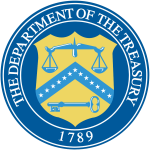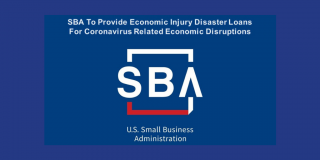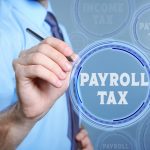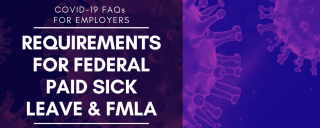PAYCHECK PROTECTION PROGRAM
As explained in our earlier email, this is a $349 billion SBA loan program that you can apply for at your local SBA-participating bank. You can get a loan for up to 2.5 times your average payroll costs in the past year (payroll costs include not only actual payroll, but other costs such as benefits). A certain amount of this loan can be forgiven by the government. Parts not forgiven will be assessed at a 0.5% fixed interest rate (virtually free money) and must be repaid in two years. The amount that can be forgiven equals your payroll costs in the 8 weeks following the start of the loan, plus some ancillary costs such as rent, mortgage interest, and utilities. Banks will start taking application from businesses on Friday, April 3, and from individual self-employed contractors on April 10. For full information on this program go the Treasury website HERE.

Economic Impact Payment
Employee Retention Tax Credit
 The Treasury Department and the Internal Revenue Service today launched the Employee Retention Credit, designed to encourage businesses to keep employees on their payroll. The refundable tax credit is 50 percent of up to $10,000 in wages paid by an eligible employer whose business has been financially impacted by COVID-19. Wages paid after March 12, 2020, and before January 1, 2021 are eligible for the credit.
The Treasury Department and the Internal Revenue Service today launched the Employee Retention Credit, designed to encourage businesses to keep employees on their payroll. The refundable tax credit is 50 percent of up to $10,000 in wages paid by an eligible employer whose business has been financially impacted by COVID-19. Wages paid after March 12, 2020, and before January 1, 2021 are eligible for the credit.- The employer’s business is fully or partially suspended by government order due to COVID-19 during the calendar quarter
- The employer’s gross receipts are below 50 percent of the comparable quarter in 2019. Once the employer’s gross receipts go above 80 percent of a comparable quarter in 2019 they no longer qualify after the end of that quarter.
Emergency Economic Injury Loan Advance (Grant)
In response to the Coronavirus (COVID-19) pandemic, small business owners in all U.S. states, Washington D.C., and territories are eligible to apply for an Economic Injury Disaster Loan advance of up to $10,000. First, you need to apply for the SBA’s Economic Injury Disaster Loan (EIDL) program provides small businesses with working capital loans of up to $2 million at 3.75% interest that can provide vital economic support to small businesses to help overcome the temporary loss of revenue they are experiencing. The $10,000 loan advance portion of this loan can be forgiven, and will provide economic relief to businesses that are currently experiencing a temporary loss of revenue. Funds will be made available within three days of a successful application, and this loan advance will not have to be repaid.
The EIDL loan advance does not need to be repaid, even if the grantee is subsequently denied an EIDL (which is also why it’s called a “grant”). It may be used to provide paid sick leave to employees, maintain payroll, meet increased production costs due to supply chain disruptions, or pay business obligations, including debts, rent and mortgage payments. Eligible grant recipients must have been in operation on January 31, 2020. NOTE: the EIDL may be combined with the PPP payroll loan, but the $10,000 grant from the EIDL is subtracted from the forgiveness part of the PPP loan. See the SBA website for more information on applying for an EIDL HERE.

Payroll Tax Deferment

The provision allows employers and self-employed individuals to defer payment of the employer share of the Social Security tax they otherwise are responsible for paying to the federal government with respect to their employees. Employers generally are responsible for paying a 6.2% Social Security tax on employee wages. The provision requires that the deferred employment tax be paid over the following two years, with half of the amount required to be paid by December 31, 2021, and the other half by December 31, 2022. The Social Security Trust Funds will be held harmless under this provision. NOTE: you cannot get this payroll tax deferment if you also receive a PPP loan or get the Employee Retention Tax Credit.
Pandemic Unemployment Assistance
This provision would create a new program that would provide unemployment benefits of $600 per week, in addition to normal state unemployment benefits, to include individuals who normally do not qualify for regular unemployment compensation and are unable to work because of the COVID-19 public health emergency, such as the self-employed. Employees who receive paid sick leave (see below) are not eligible for this unemployment benefit. There is nothing for employers or employees to do. This benefit, which only lasts through July 31, is applied automatically if the employee qualifies. Here are the criteria for employees to receive this additional unemployment compensation:
Covered individuals are those persons who self-certify they are available and able to work, but are unemployed or partially unemployed due to any of the following:
- The individual has been diagnosed with COVID-19 or is experiencing symptoms and seeking a medical diagnosis.
- A member of the individual’s household has been diagnosed with COVID-19.
- The individual is providing care for a family member or household member who has been diagnosed with COVID-19.
- The individual is the primary caregiver for a child or other person in the household who is unable to attend school or another facility as a direct result of COVID-19.
- The individual is unable to reach the place of employment because of a quarantine imposed as a direct result of COVID-19.
- The individual is unable to work because a health care provider has advised the individual to self-quarantine due to COVID-19 concerns.
- The individual was scheduled to commence employment and does not have a job or is unable to reach the job as a direct result of COVID-19.
- The individual has become the breadwinner or major support for a household because the head of household has died as a direct result of COVID-19.
- The individual has to quit his or her job as a direct result of COVID-19.
- The individual’s place of employment is closed as a direct result of COVID-19.
Withdrawals and Loans from Retirement Plans
 For a limited time, Americans will be able to withdraw money from tax-deferred accounts without penalties under a stimulus package signed into law Friday by President Trump. Rules on 401(k) loans will be relaxed, and some retirees can avoid so-called required minimum distribution, or RMD, rules that might have been onerous. One provision lets investors of any age take as much as $100,000 from retirement accounts this year without paying an early withdrawal 10% penalty. They also can avoid taxes on the withdrawal if the money is put back in the account within three years. If it can’t be returned, taxes can be paid over three years.
For a limited time, Americans will be able to withdraw money from tax-deferred accounts without penalties under a stimulus package signed into law Friday by President Trump. Rules on 401(k) loans will be relaxed, and some retirees can avoid so-called required minimum distribution, or RMD, rules that might have been onerous. One provision lets investors of any age take as much as $100,000 from retirement accounts this year without paying an early withdrawal 10% penalty. They also can avoid taxes on the withdrawal if the money is put back in the account within three years. If it can’t be returned, taxes can be paid over three years.
It also makes it easier to borrow money from 401(k) accounts, raising the limit to $100,000 from $50,000. The payment dates for any loans due the rest of 2020 will be extended for a year.
When retirees reach their early 70s, they’re required to start taking money out of tax-deferred accounts like 401(k)s and IRAs, and pay taxes on those distributions. The legislation waives those rules in 2020.
You should consult with your retirement plan provider for details. HERE is an informative article on the topic from FORTUNE.
Your copy should address 3 key questions: Who am I writing for? (Audience) Why should they care? (Benefit) What do I want them to do here? (Call-to-Action)
Create a great offer by adding words like “free” “personalized” “complimentary” or “customized.” A sense of urgency often helps readers take an action, so think about inserting phrases like “for a limited time only” or “only 7 remaining!”
Families First Coronavirus Response Act (FFCRA)

This is legislation earlier than the CARES Act. As we’ve already extensively reported, there is a paid sick leave law, where qualifying employees can be given up to two weeks of paid sick leave, and you can recoup this leave cost through credits to the payroll taxes you submit to the IRS. There are six specific events that trigger this paid leave that your employee must meet. Up to an additional 10 weeks of child care may also be applicable. Paid leave is at either 100% or two-thirds, depending on which triggering event. This program is mandatory for all companies under 500 employees unless you can demonstrate hardship.
CARES Act amendments to the FFCRAAs originally drafted, paid leave under the emergency Family and Medical Leave Expansion Act and the emergency paid sick leave act could not exceed certain monetary limits. The CARES Act now states that employers are not required to pay employees more than the monetary limits in the FFCRA, thereby leaving the door open for employers who wish to provide additional compensation to employees above the monetary limits in the FFCRA. Any additional compensation, however, is not subject to a tax credit.
The CARES Act makes an employee who was laid off on March 1, 2020 or later, and subsequently rehired by the same employer, eligible for paid leave under the extended FMLA, so long as the employee was employed for at least 30 of the last 60 calendar days prior to layoff.
For detailed information, please see the IRS website HERE

Gray, Gray and Gray Webinar
All the above items, plus more, are covered in the detailed Gray, Gray and Gray webinar which can viewed HERE. Other items they cover, that we don’t show above, include student loans, charitable contributions, and new depreciation and interest expense rules, which you can cover with your accountant, if they’re not Gray, Gray and Gray.
